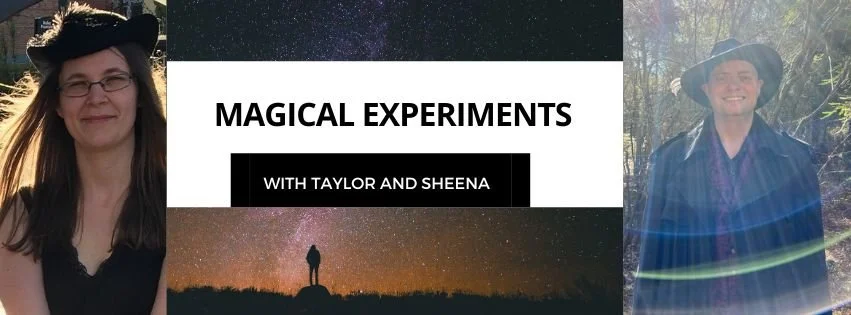Note from Taylor: This is an appendix in Magical Identity. Thought I'd give a little teaser of what to expect in the book. I hope you enjoy!

In this book I've discussed identity and how it applies to magic. Now I want to present an example of how magic can be applied to identity. One of the biological features of identity is associative activation:
Ideas that have been evoked trigger many other ideas, in a spreading cascade of activity in your brain. The essential feature of this complex set of mental events is coherence. Each element is connected, and each supports and strengthens the others. The word evokes memories, which evoke emotions, which in turn evoke facial expressions and other reactions, such as a general tensing up and an avoidance tendency. The facial expression and the avoidance motion intensify the feelings to which they are linked, and the feelings in turn reinforce compatible ideas. all this happens quickly and all at once, yielding a self-reinforcing pattern of cognitive, emotional, and physical responses that is both diverse and integrated (Kahneman 2011, P. 51).
Associative activation triggers a flood of ideas. A few of them register with us consciously, but the majority of them aren't consciously thought of, but nonetheless are integrated into our identity. What this means is that we have a variety of associated ideas with a given stimulus that we may not have conscious access to, but nonetheless influence our activities and choices. This is known as a priming effect. For example, if you saw the word EAT and then saw a word fragment SO_P, you are more likely to fill in the blank with U, creating SOUP, than with A, which would would create SOAP (Kahneman 2011). The word eat primes associated ideas and experiences that are evoked by seeing the word and considering it. You might feel a sensation of hunger as you've read the last couple of sentences, and this also is a result of priming. This effect occurs in a variety of ways. Kahneman cites another case study where a group of students were given scrambled sentences, half of which included the words Florida, forgetful, bald, gray, or wrinkle. Once the task was completed, the students were asked to walk to another place to do another task. The scientists observed how they walked and found that people who'd formed sentences using one or more of those walked significantly slower than people who did not (Kahneman 2011). The reason is that they'd been primed by the experiment, and even though they didn't consciously think about it, their identities embodied the associated ideas with the words. Their actions were influenced by the idea.
Priming is used in marketing, both in politics and in business. For instance, if a school wants to improve the chance of getting more funding, having a voting booth at the school will significantly increase the votes in favor of the funding, even from non-parents (Kahneman 2011). The reason is simple. Being surrounded by imagery associated with schools evokes memories and other ideas about education that prompts a desire to improve funding. We see this effect in commercials as well. Watch a fast food commercial and you may feel a sudden hunger pang and craving for that food, even if you'd recently eaten. Even when we consciously think about the fast food, we're still priming ourselves in favor of it to some degree, unless of course you have associations that are unpleasant. The point is that we are primed on a daily basis and don't even realize it. Consciousness allows us to recognize some of the associations, but others are experienced and acted on without consciously considering why. After all, if you're hungry you won't spend much time thinking about why you are hungry. Instead you'll satiate that hunger.
Priming is even used in social media. Facebook ads is a great example of priming at works. The ads you see on Facebook are targeted toward you based on your interests and your friends interests. Additionally if a friend of yours likes the service or product featured in the ad, it's indicated as a way of building further association. You are primed, so that even if you don't click on the ad, it's still may an associative impression with not just your interests but also with the idea that the next time you see or hear from that friend it'll trigger an association with what was advertised.
So how can we apply priming to magical work. We understand that a given idea will trigger an association of ideas, some of which will be integrated into our identity. There are two approaches we can take to this matter. First we can be selective about what we allow to influence us. For example, I don't have cable TV. I've purposely chosen not to in order to save money, but also to limit the exposure to commercials. The result is that I only encounter commercials if I watch a show on Hulu, turn the radio on or see them on a bill board or on the internet. I keep my radio off, limit my access to social media sites and while I enjoy a good show on Hulu, I also tend to ignore the commercials by focusing on something else at the time. Conscious actions can limit associations, if done right. At the same time, I know I'm going to be influenced to some degree and I accept that such an influence will be there. What I try to do is question why I'm feeling hunger for a particular food as opposed to just being hungry. This kind of question can be effective for helping to limit the effects of priming.
The second approach involves actually using priming to prime the pump of your identity and set up associations that are favorable for you and motivate you to do activities that will help you accomplish goals you set for yourself. Recently I acquired a whiteboard to use as a priming tool. It's set up so that I have to look at it when I come into my office and it reminds me of various projects I need to work. It primes the pump because when I see the tasks I need to do it consciously evokes the given task as well as associated ideas and experiences that are relevant to that task. I see it as being a useful stress tool in the sense that it keeps my attention consistently focused on the goals I want to achieve.
You can set your own environment up with similar cues that prime you. For example laying clothes out the night before primes you in the morning when you wake up. The clothes have associations with your professional life and activities and can even evoke associations of whatever you were thinking about when you laid them out. Putting an open recipe book with ingredients nearby can be useful for priming you toward cooking at home. In essence you learn to use priming to remind you of what you want to do, both in terms of actual activities and lifestyle choices. You prime your identity to keep your consciousness on task.
You can also use priming in your magical process. In fact the use of sigils works on the principle of priming. The sigil is associated with the desired result as well as the process that will be used to obtain that result. Every time you see the sigil you are primed toward achieving that result. Similarly if you ritual tools or other props you can create specific associations with those tools that will prime you. The different attributions we associate with tools are essentially primed ideas that prompt action, and we don't have to limit them to magical actions. We can deliberately create mundane actions that we associate with a given tool that prompts follow-up actions on our part to create a path of least resistance for the magic to manifest through.
The deliberate set-up of your environment as well as the crafting of chosen associations is how you turn priming into a magical tool and make your identity into an ally that supports your conscious goals and activities. If we're going to have associations that effect us on an identity level then we should do our best to pick those associations so we can prime the pump and create an embodied identity that enables us to achieve the results we desire and sustain the life we want to live.




